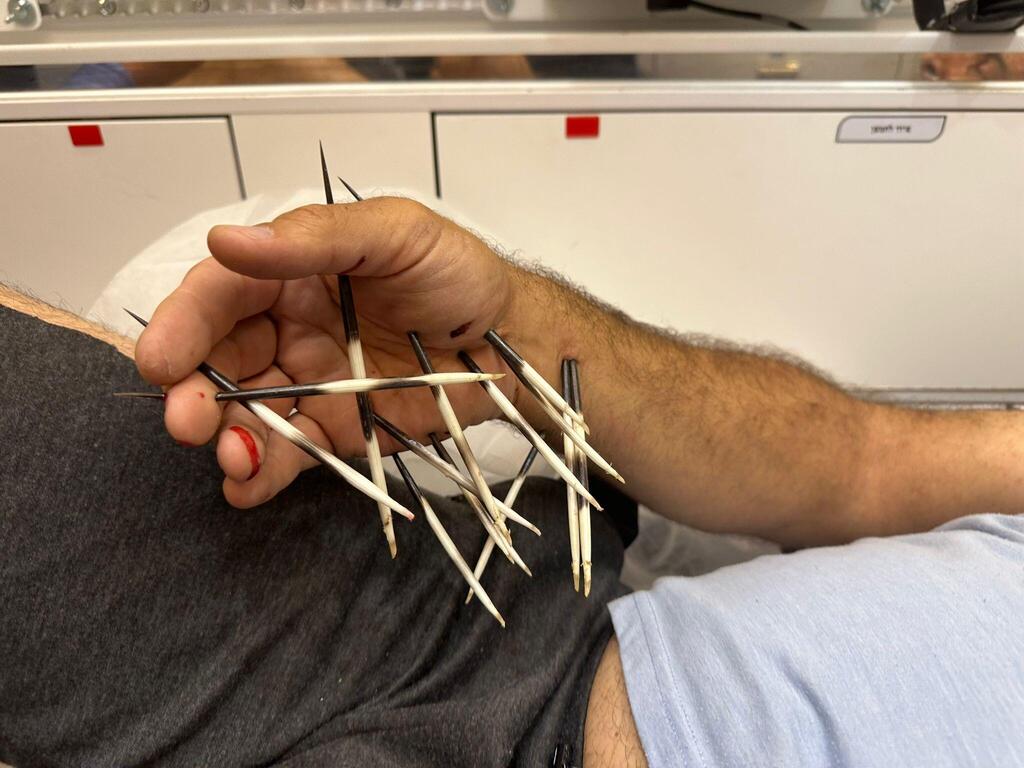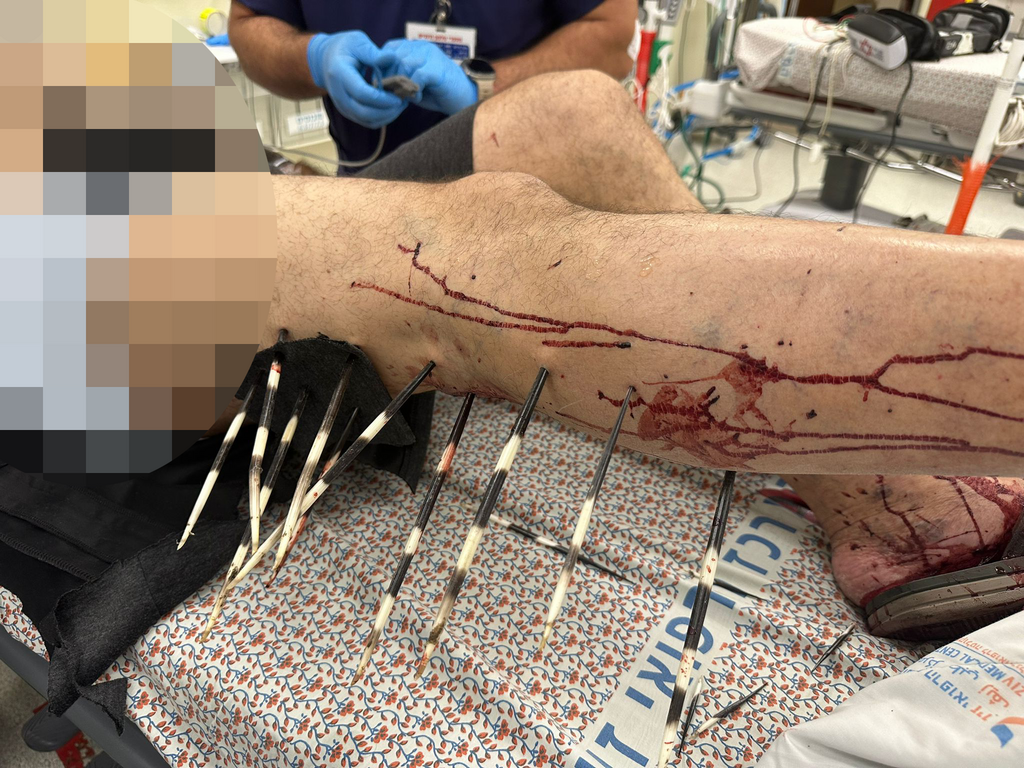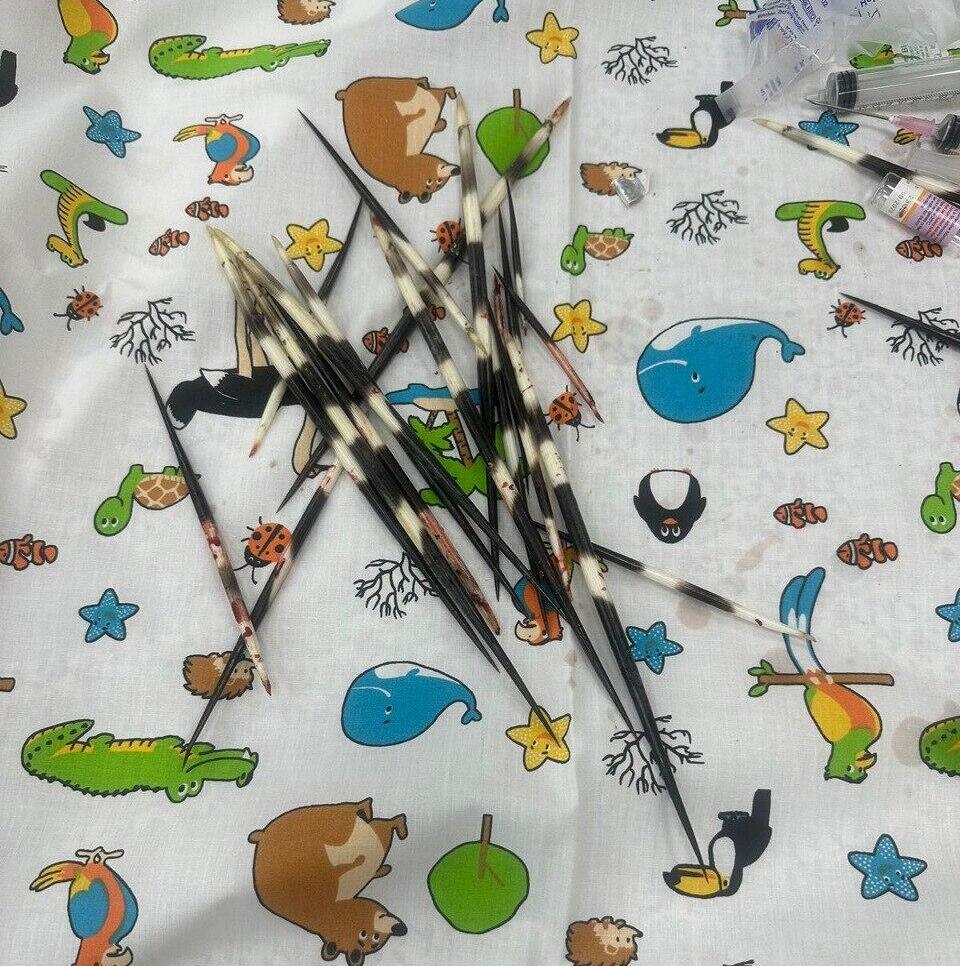Getting your Trinity Audio player ready...
Shalom Younasi, a 50-year-old resident of Hatzor Haglilit was hurt over the weekend when a porcupine stuck 41 quills in his arms and legs. Younasi, who had been evacuated from his home in Kiryat Shmona due to the war, was rushed to the Ziv Medical Center in Safed for emergency treatment by orthopedic and vascular experts. All the quills were successfully removed.
He is in stable condition and remains hospitalized in the orthopedic department for observation. He will likely require surgery later.
"Life has unexpected surprises, and I had an encounter with a very cute animal that I didn’t know could be so aggressive," Younasi told Ynet from his hospital bed. "The animal must have felt threatened for some reason, and I saw it running toward me. I wanted to turn and run away, but I stumbled. The porcupine jumped on me and stabbed me with very sharp quills. I tried to defend myself, and my hands got filled with quills – 41 quills in my hands and legs. I thought I was going to die."
The porcupine (Hystrix indica) is Israel's largest rodent. Its body is covered with quills that can be up to 20 inches long. The porcupine uses its quills only for passive defense against predators and is unable to "shoot" them. When feeling threatened, the porcupine will erect its quills, causing them to rattle and make a threatening noise.
The porcupine is a vegetarian animal that mainly feeds on plant tubers and roots. It is nocturnal and hides in burrows or dense vegetation during the day. Porcupines move along fixed paths, a trait that makes it easier to locate their burrows and the places they enter agricultural fields. They have a keen sense of smell.
"This is the first time I have encountered such a severe injury with more than 40 quills in the body. It's a dangerous injury that caused nerve damage to the patient's limbs," Dr. Dorir Knaana who treated Younasi said. "These quills are very sharp and penetrate deeply like knives. We received him and started treatment to relieve pain and administered antibiotics and a tetanus shot. We conducted a CT scan to rule out vascular damage and later found the nerve damage, which we are now treating."
Magen David Adom paramedic Shimon Bismuth, who treated Younasi after the injury, said: "The injured person, who was hit by the porcupine quills in the hand and leg, was sitting on a chair fully conscious and in a lot of pain. He told us he was walking around when he suddenly got hit by the quills. We provided him with medical treatment, including painkillers and stopping the bleeding, and evacuated him to the hospital in a stable condition. This is an extremely unusual event that I have never seen before."





